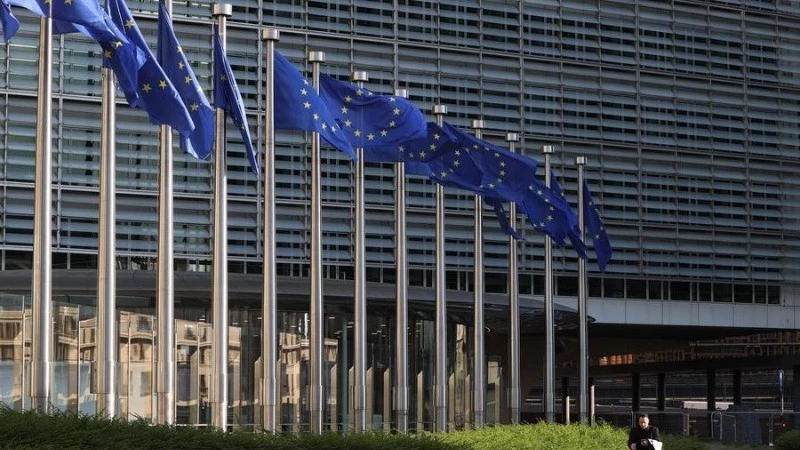A transatlantic breakthrough
The US and the European Union (EU) have reached a deal to resolve their long-standing tariff dispute, effectively averting a full-blown trade war. The agreement, announced just days ahead of the August 1 deadline, spares the EU from sweeping 30% US tariffs.
 |
| EU flag at the European Commission headquarters in Brussels, Belgium. |
Speaking to the press after meeting European Commission President Ursula von der Leyen in Scotland, US President Donald Trump confirmed that both sides had secured a mutually beneficial deal. The agreement includes a baseline tariff of 15% on EU exports to the US, notably covering the bloc’s key automobile sector, which is currently subject to a 25% tariff.
Trump also revealed that the EU had agreed to purchase US energy products worth 750 billion USD and pledged an additional 600 billion USD in investment into the US.
Von der Leyen, who led tough negotiations on behalf of the bloc to salvage the 1.9 trillion USD transatlantic trade relationship in goods and services, called the deal a step toward stability, something she said was vital for businesses on both sides of the Atlantic. She added that the purchase of US energy would help diversify EU supply sources and enhance Europe’s energy security. The energy deals, she added, would be distributed evenly over three-year period.
The two sides also agreed to eliminate tariffs on key goods, including aircraft, certain chemicals, semiconductors, agricultural products, and critical raw materials. Von der Leyen expressed hopes of securing further "zero-for-zero" agreements in the coming days, particularly in the wine sector.
The deal has sparked mixed reactions among EU politicians and businesses. German Chancellor Friedrich Merz welcomed the move, saying it prevented an unnecessary escalation in transatlantic trade tensions. However, several industries in Germany described it as a “painful compromise” with potential consequences.
Bernd Lange, Chair of the European Parliament’s Committee on International Trade, criticised the deal as unbalanced and inadequate. He argued that the 15% tariff rate was four times higher than the current average, while the EU, by contrast, had agreed to lift tariffs on US goods. He also questioned the wisdom of the EU’s additional 600 billion USD investment and military equipment purchases from the US, suggesting they ran counter to European economic interests.
From an economic perspective, Jarrod Kerr, Chief Economist at Kiwibank (New Zealand), expressed surprise at the relatively moderate tariff and called it a positive signal for transatlantic trade. Tony Sycamore from IG said the agreement significantly reduced the risk of a prolonged trade war. Meanwhile, Michael Brown, Senior Research Strategist at Pepperstone (UK), noted that although the 15% tariff was still steep, it was far preferable to the 30% that Washington had previously threatened.
News of the deal fuelled gains in futures markets on both sides of the Atlantic on July 28. In Europe, EUROSTOXX 50 and DAX futures jumped by more than 0.9%, while FTSE futures climbed 0.56%. In the US, Nasdaq futures rose 0.52% and S&P futures edged up 0.4%.
According to Reuters, the euro also strengthened by around 0.2% against the US dollar, the British pound, and the Japanese yen within an hour of the announcement.
Analysts noted that the US–EU trade deal had effectively averted a tit-for-tat tariff war. EU member states had previously voted to impose retaliatory tariffs worth 93 billion EUR on US goods starting August 7, should no agreement be reached.
The accord is seen as a “cooling-off” measure to head off Washington’s threat of imposing 30% tariffs on EU imports from early August. It also marks a step toward restoring trust between the two partners and preserving the integrity of transatlantic supply chains.
NDO





READER COMMENTS